Emerging technologies enable producers to apply new software systems in an integrated approach that provides usable mine- and plant-related information—not just data
By Fabio Mielli
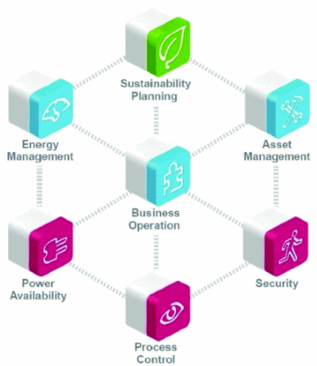 |
| Platform of integrated software applications and suites that maximize business performance while conserving enterprise resources. |
Over the past decade, mining and mineral processing companies have utilized several different software and systems in a targeted manner to improve various aspects of individual processes and mine performance. This approach tended to focus on isolated aspects of plant performance such as process control, plant supervision, mining planning, process historians, quality control, etc. While these approaches have yielded acceptable return on investment, a greater opportunity exists for mining operations to leverage new software technologies and for the potential integration to enhance operational excellence across the entire operation, even including remote mines.
This article outlines new approaches and innovative technologies for business, sustainability, energy management, video surveillance, monitoring, plant management software, and the additional benefits of information exchange among all of these applications to deliver an integrated view of the mining business.
In remote locations, the information and situation awareness is typically limited to the location itself. In addition, access to that information is limited to a small, select group of personnel who have received training on how to interpret the results. When the situation affects another area of the mine, the information is then relayed to the applicable areas involved. Few workers have time to analyze the situation thoroughly in order to see how it affects the mine’s symbiotic relationship within all areas of production.
If the capability to correlate and measure events and situations that affect overall performance is not in place, the opportunity to identify process improvement becomes more difficult.
The Central Control Room
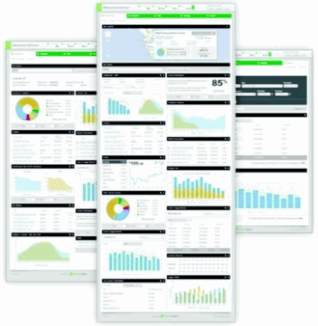 |
| Snapshot of the sustainability suite tool. |
One misunderstanding about central control rooms is the idea of having several applications from remote mines being monitored from a distance at a single location with several monitors. This idea is only part of the concept. The most challenging approach of the central control room is the analytics behind the information, including data aggregation and mixing different disciplines to bring new insights.
The core of the central control room is the integration of Information Technology and Operations Technology, which brings more and more information from real-time systems (from the mines) into IT software. These are among the key opportunities to enhance efficiency, responsiveness and profitability across the mining value chain.
The Right Information to the Right People
The central command has to deliver relevant information to the right people while avoiding overload of information and the deliverance of the wrong key performance indicators to the wrong people.
Field personnel, on-site or remotely, can control process and network performance to ensure business continuity and power availability in real-time, while tracking production and energy consumption in a secure environment.
Executives drive sustainability strategies efficiently, choosing the best scenario that meets business objectives and regulatory requirements to conserve enterprise-wide resources.
Plant managers can optimize operations, energy and assets through smart analytical tools at one or more sites.
Applications examples:
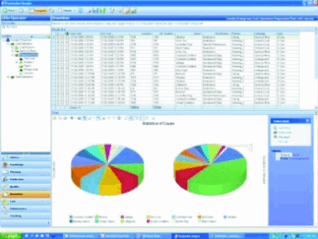 |
| Snapshot of the mining operations tool, showing causes of mine downtime (categorized). |
The software examples listed go beyond simple applications; most of them aggregate information from different sources and deliver new insights for mining operations.
Sustainability Portal
The sustainability portal acts as the news aggregator for the sustainability/energy team. This application is able to track and manage more than 100 separate resources and metrics, including commodities prices (from energy to raw materials), market news (from the Internet), energy efficiency project status, progress and goals, carbon footprint, and water and energy consumption from different mines and locations.
In addition, this tool can be customized according to the user’s needs, dragging and dropping the relevant applications.
Power and Energy Management
Using smart meters and devices, the energy manager is able to gather information from field systems, cross information with other software applications, and deliver power quality and energy management intelligence.
The ability to integrate other utilities such as water, air, gas, electricity and steam (WAGES) into energy management systems is extremely valuable.
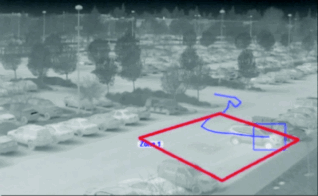 |
| The idea behind video analytics is to bring intelligence to the camera systems and alert the operator if something unusual is happening. |
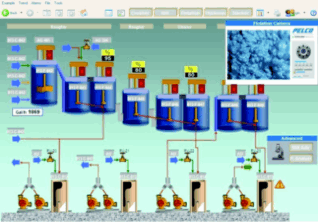 |
| Advanced supervision system screenshot. |
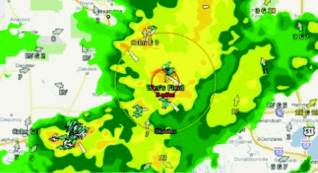 |
| Snapshot of the advanced weather tool. |
Plant Operations Tools
Such applications are designed to assist in the optimization of production, processes, performance and energy usage. This application delivers near real-time access to plant and business information. Plant Operation Systems connect to multiple plant and business systems to collect relevant data and present it as easy to understand, real-time intelligence for productivity analysis. It also allows mining operations to identify and address performance issues such as process bottlenecks and production downtime, as well as calculate key performance indicators and real production costs. For example, a simple downtime chart categorized by cause can involve data aggregation from several mining software, power systems, automation field devices and maintenance applications.
Video Analytics
Even though the systems are high tech, the concept of video analytics is quite simple: the ability of the camera systems to analyze images in a defined context.
Without these systems, the role is transferred to the plant operator or security personnel, who needs to analyze dozens of monitors and cameras in real-time, as well as identify erratic behavior involving people and assets. The idea behind video analytics is to bring intelligence to the camera systems to alert the operator if abnormal activity is occurring, based on pre-defined conditions and thresholds.
Such technologies can be used simultaneously for process control monitoring, asset safety, and most importantly, personnel safety.
Process Control/Advanced Supervision Systems
The supervision system is an operator graphical interface/human machine interface that allows production and maintenance personnel to operate and oversee different mining operations and potential issues including:
- System overview and parameters,
- Real-time information processing,
- Process trends,
- Operation of systems,
- Alarms and fault detection
- Process control system and network status,
- Process and production tuning,
- Maintenance information and remote troubleshooting, and
- Integration with camera systems.
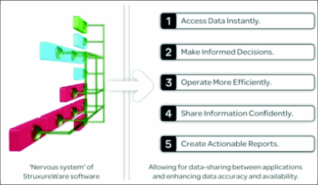 |
| Web services are responsible for connecting all of the mining applications in a single control room. |
Theoretically, a fully automated process control operation can be achieved from a central control room. Advanced supervision systems encompass multiple redundancy characteristics that allow for safer visualization, as well as performance and interaction with mining control systems across multiple remote locations. However, the real-time characteristics of the major process areas, as well as potential safety issues and maintenance requirements still require a combination of decisions from the local mine control/supervision systems and remote monitoring and supervision.
Advanced Weather Systems
Severe weather can directly impact mining personnel safety, productivity and comfort. An advanced weather system is a Web-based application that allows several mining operations to be monitored 24/7 with advanced forecast and alerting capabilities (including real-time lightning detection).
High-resolution, street-level mine maps must be able to display color-coded storm corridors, winds and lightning for a complete view of approaching storms. This allows mine operators to view the conditions associated with each storm, as well as to determine if a storm is severe in nature. The tracking system shows where severe weather is occurring, where it is heading within the next 30 minutes, and what time it will reach locations in its path.
Other valuable weather layers can be added to the display to provide mine operators with a more complete picture. Observations and forecasts of temperature, wind, heat index, and other weather parameters are available. Users have the ability to display their own custom assets, geo-referenced to the weather. For example, an overland conveying system or a boundary of a surface mine could be added as a layer.
Connectivity (exchanging data among applications)
The greatest potential of these applications is the ability to exchange information among them and to deliver enhanced information and decisions. This information exchange includes surveillance systems, camera systems and process control, financial information and energy consumption, energy management and production information, and so on.
The nervous system of this integration needs to reside in web services/service oriented architectures, compatible with the adopted industry standards, from OPC UA, ISA95, ISA88, to IEC 61131-3. These standards have greatly improved the way systems communicate and provide users with flexibility, choice and predictability. Solutions are based on open architectures, inter-connectivity and the integration of new technologies.
Information, not Data
The mining industry is under constant pressure to meet regulatory requirements, maximize energy management, comply with safety/access control requirements, address sustainability initiatives, and respond to industry competition. There is a need for solutions that enable the understanding of the mining operations and business performance as a whole instead of pieces of data generated from isolated areas, systems and equipment.
In conclusion, mining operations need information, not only data.
Mielli is the U.S. mining, minerals and metals segment manager at Schneider Electric. He has 20 years of experience in power, speed drives, automation and industrial control. Mielli is a published author credited in more than 20 articles and white papers focused on automation, energy and trends related to the mining, minerals and metals industries, including challenges and applications. He is also an accomplished blogger featured on the Schneider Electric blog site: http://blog.schneider-electric.com/mining-metals-minerals/









